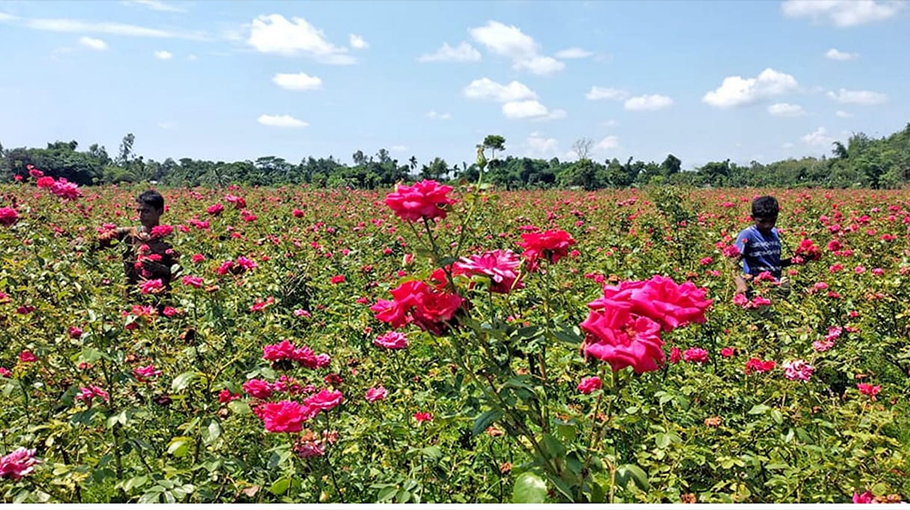Commercial production of flowers rises in Chakaria

Various flowers including rose, gladiolus are cultivated commercially on both sides of the Cox's Bazar-Chattagram highway passing through Chakaria Baraitali Union of Cox's Bazar.
Although flowers are cultivated in different districts of the country including Jashore, Chuadanga, Kushtia, Jhenaidha and Savar of Dhaka, over the last 30 years, the flower production is increasing gradually in Chakaria.
Local flower growers say that they are trying to turn around again after the covid-19 epidemic. The price of flowers has increased more than before. That's why many people are showing interest in flower cultivation. But this progress is being hindered due to the abundance of artificial flowers and some other limitations. They are expecting the government's initiative in this regard.
Weddings, Gaye Holud (a ceremonial part of wedding celebration of putting turmeric on bride and groom’s bodies), various meetings, gatherings and national programmes are decorated with flowers. So, there is a huge demand for flowers throughout the year.
Sahabuddin and Didar, two local florist told Bangladesh Post “Demand for natural flowers has declined slightly due to artificial flowers imported from abroad. Besides, we had suffered a lot due to the covid-19 pandemic. Many have stopped cultivating flowers. For this, flower growers should be given incentives and soft loan by the government to increase the flower cultivation.”
SM Nasim Hossain, an official of Chakaria Upazila office of the Department of Agricultural Extension told Bangladesh Post roses have been cultivated on 100 hectares, ‘Rajonigandha’ on 55 hectares and ‘Ghadha’ on 5 hectares of land in Chakaria. Around 550 farmers are engaged in flower cultivation.
“Flower cultivation is increasing day by day in this area. Farmers are getting higher prices than before. To continue this trend, they need loans on easy terms,” he added.
According to the state-run Horticulture Foundation, the local cut flower and foliage sector generates Tk 1,600 crore in annual turnover and its annual growth is 10-15 per cent.
Currently Bangladesh meets 95 per cent of local demand through domestic production, with the remaining 5 per cent imported from China, India, and Malaysia.




